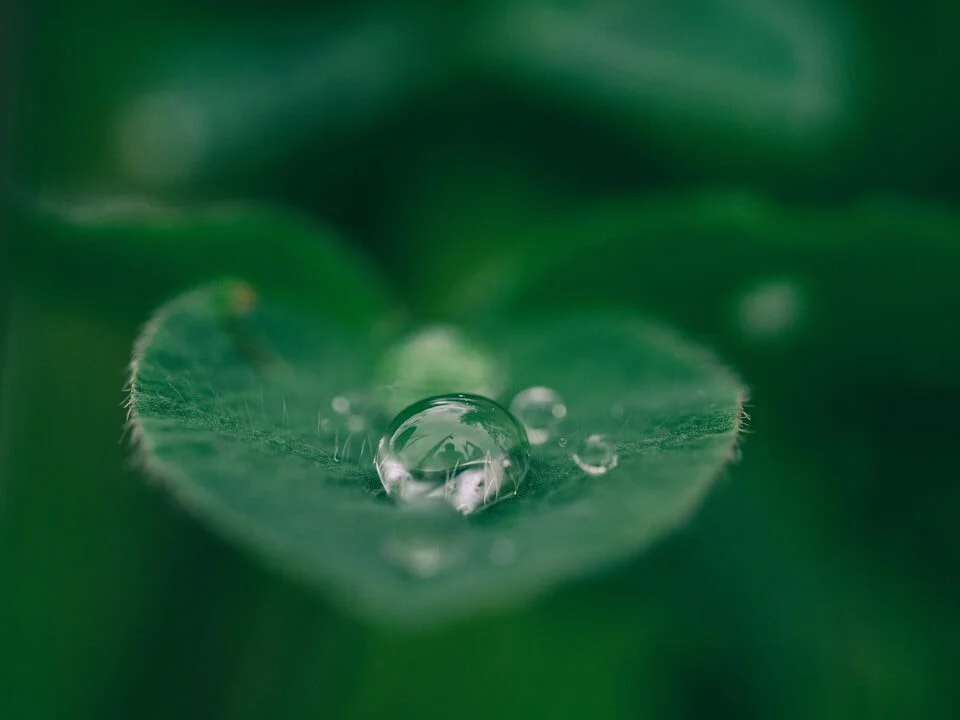
Water consumption and land area comparison between soybean and insect protein production
March 22nd is the official World Water Day, and to honor that we decided to do a quick calculation on water consumption and the effective use of land area comparing soy and black soldier fly production for animal feed.
First of all, we at Manna Insect use refurbished used sea containers as a base element to create insect rearing facilities that can be setup just about anywhere without the need of local infrastructure, movable anywhere close to the biowaste stream or the end user of larvae and/or frass. A 20-foot sea container has a floor space of 13.86 square meters (146 square feet).
One square meter of land area used for soybean production can produce approx. 0,317 kg of feed per year (Average soybean yield for the farms in 2015 to 2019 was 3.17 metric tons per hectare).
Manna containers produce on average 550 kg of live larvae per growth cycle, which is 10-14 days, so you can run 2-3 batches per month with one container. As the larvae can be used as feed live, calculated with 10 day growth period, one Manna rearing container can produce c. 20075 kg of feed per year. If we calculate with the longer growth cycle of 14 days, it equals to c. 14339 kg of feed.
Compared to similar land area (13,86 m2), one can only produce less than 7 kg of feed per year!!! Absolutely crazy, right?!
Yes, we know the comparison isn’t fair. The biowaste is not available just anywhere, and sometimes you have to pay for it, the biowaste may need pre-processing, there may not be local use cases for the larvae and frass, and so on, but on the other hand soybean needs also “maintenance” i.e. farming, it requires post-processing, it is always (!) transported elsewhere for post-production or consumption, while the rearing containers could even be stacked on top of each other, they can be operated with solar panels, they can be placed in a parking lot or the backyard of a supermarket, and can be moved elsewhere when necessary.
There are of course these and other factors at play also, not just the land area or water consumption, but if you wish to make business calculations taking into account the relevant input and output, check out the free and open BSF business case calculator and do the math.
Compared to traditional feed sources, such as soy and fishmeal, rearing black soldier fly larvae requires in most cases no added water at all, and in some cases can even extract water from the process – it all depends on the waste composition and moisture. Only if the organic waste used as a substrate for the larvae is very dry, it may require adding small amounts of water to optimize the waste consumption and larvae growth.
The amount of water needed to produce soy varies somewhat depending on e.g. planting date (season), maturity, growth stage, location, and climate conditions. The growth stage requires 0,7 inches of water per week while flowering stages require twice that amount (1,4 inches of water per week). Once bean pods are elongating, soybean water consumption increases to 1,4-1,75 inches of water per week. And when you multiply this with the production area, you can see the overall water consumption is quite significant!
According to a research cited by Science Direct, “Black soldier fly larvae and their affinity for organic waste processing”, the positive effects of black soldier fly rearing compared to soy when both used for animal feed are significant.
“Biowaste (municipal solid waste from the household kitchen and food waste, market waste, park waste, and processing residue from food manufacturing plants) makes up as much as 70% of the waste in low- and middle-income areas and generally ends up in landfills and wastewater which account for around 90% of the global waste sector emissions (Mertenat et al., 2019).”
“The emissions of Greenhouse gases such as methane, ammonia, and nitrous oxide are high environmental concerns for humans and climate, and those gases result from material decomposing in landfills. By diverting this biowaste to feed BSFL in mass production, the alternative of using the landfills is avoided as well as comparing the cost of creating raw materials equivalent to that of BSF protein meal and BSF oils, means the opportunity to improve efficiency in sustainability for the end-products is doubled.”
“A case study in Indonesia shows that the BSF waste treatment facility has lower hazardous gas emissions and energy consumption than the open windrowing composting (Mertenat et al., 2019). According to Smetana et al. (2016), the insect-based protein meal is 2–5 times more environmentally friendly product compared to the products commercially available (such as soy).”
Now, the question is, why an earth are we still focused on expanding the soy production and usage, when the production capacity is so low, and the negative environmental impacts are plenty (including deforestation, biodiversity, water consumption etc.)?
And what comes to Manna, we’re open for business, if you wish to start planning your own BSF production, we already have operating containers in more than a dozen countries in 3 continents.
Sources:
https://crops.extension.iastate.edu/encyclopedia/soybean-plant-population
https://extensionpublications.unl.edu/assets/pdf/g1367.pdf
https://extension.okstate.edu/fact-sheets/print-publications/e/soybean-production-guide-e-967.pdf
https://www.sciencedirect.com/science/article/pii/S0956053X22000010
https://soybeanresearchinfo.com/agronomics/soybean-irrigation/
